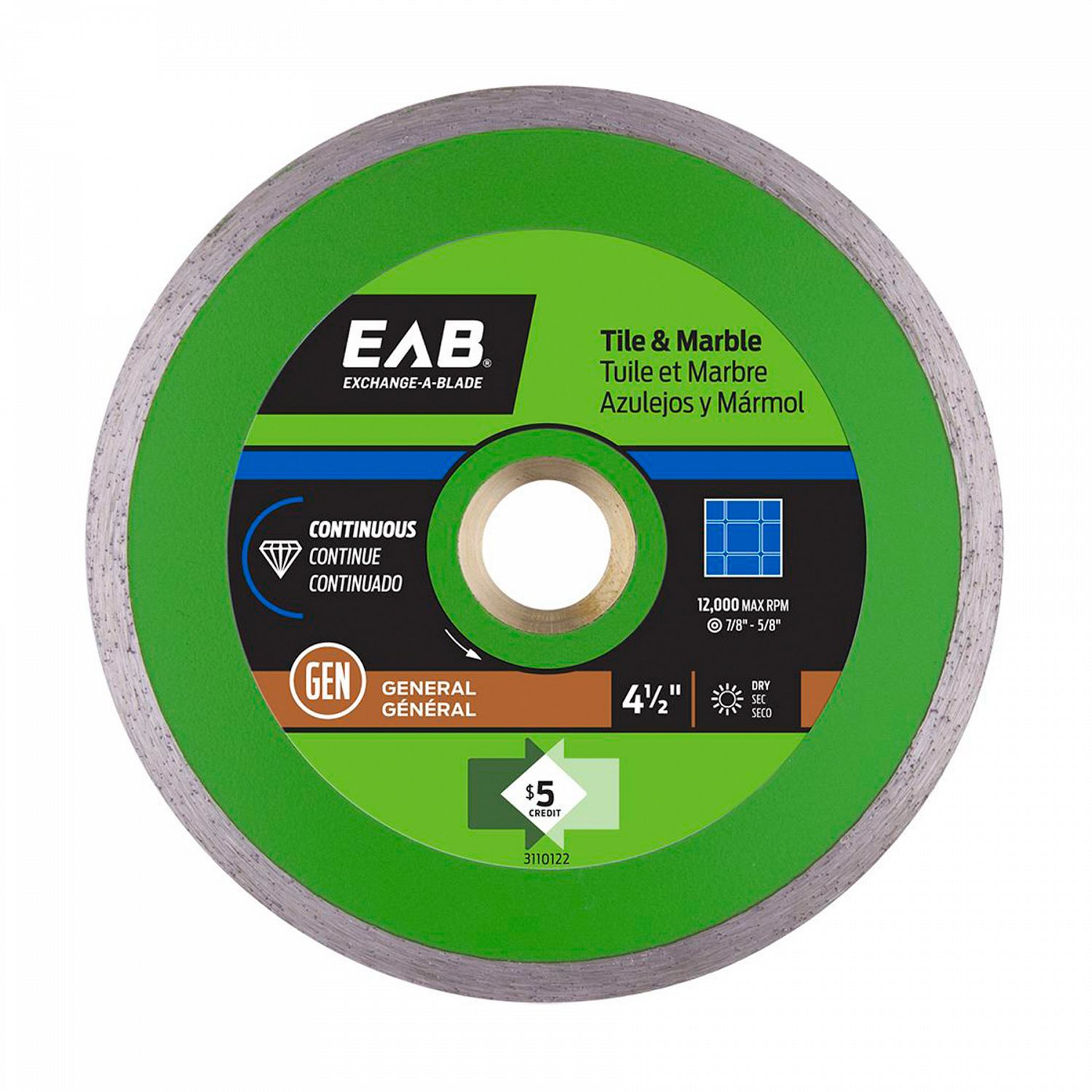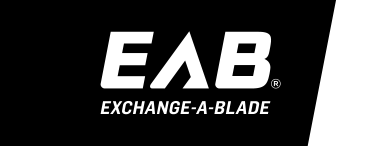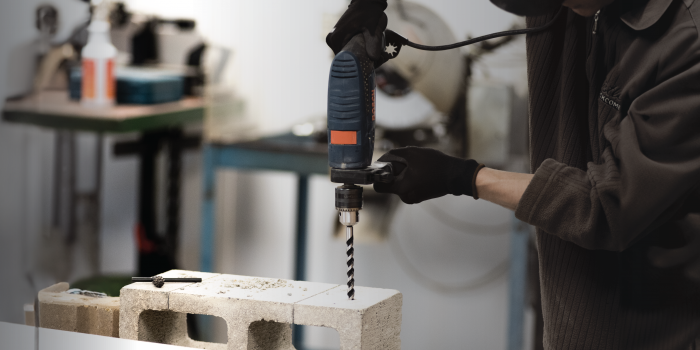A diamond is forever….or is it?
2020/02/14
The tagline ‘A Diamond Is Forever’ was written in 1947 and used by De Beers as a campaign to help boost the sales of diamonds which had fallen during the Great Depression.
But, is a diamond really forever? Ask your tool.
Diamond is one of the hardest materials known to man. Because of its high abrasion and resistant nature it makes it ideal for cutting applications. Diamond cutting tools find many applications across various industries. In construction, diamond saw blades are a great example of a Diamond as a cutting tool.
Let’s talk about how diamond tool accessories work, using a diamond saw blade as an example.
A diamond saw blade consists of 2 parts, the steel core or support part and the segment or cutting part. For this article we will focus on the segment, where all diamonds are located.
Segment: The cutting Part
The SEGMENT is made up of two components: diamond and metal bonds.
a. Diamond Crystals - The diamonds used on tools are synthetic (man made) because their crystal shape, size, and strength can be controlled through the manufacturing process. This control allows for accurate prediction of cutting speed, blade life and consistent repeatability. The most important factors to consider about a diamond tool are:
- Amount of diamond in the segment
- Quality of the diamond in the segment
- Size of the diamond in the segment
1. Amount of Diamond - As more diamond is added to the segment more horsepower is needed to make the blade cut, so blades designed for high horsepower saws will have more diamond in the segment.
2. Quality of the Diamond - The quality of the diamond determines the ability to resist heat and maintain a sharp point. Better diamonds can hold a point longer at higher temperatures.
3. Size of the Diamond - In practical application finer diamond is used for critically-hard material like Chert or Quartz while the larger more coarse diamond is used for soft materials like asphalt and red bricks.
Bonding System
The bond is a mixture of metal powders used in various combinations to achieve specific wear rates. A correctly-formulated bond holds the diamond in place, just long enough to get maximum use from the diamond points before releasing the stone and exposing the next layer of diamond. The hard bonds are mostly made up of hard metals like Tungsten Carbide.
How do diamond blades work?
Diamond blades don’t actually cut, they grind. The exposed diamond crystals do the grinding while the bond holds the diamonds in place. Behind each exposed diamond is a “bond tail” which helps to support the diamond. As the blade rotates through the material the exposed surface of the diamonds grind the material being cut into a fine powder.
After several thousand passes through the material being cut, the exposed diamonds begin to crack and fracture. The matrix holding the diamond also begins to wear away.
As the diamond wears and fractures, controlled erosion of the metal bond containing the diamond exposes new sharp diamond points. This cycle of erosion and exposure continues until all of the diamond and metal bond section of the segment is gone.
Some of the uses of Diamond Cutting Tools are:
- Diamond Saw Blades - They are used in handheld grinders, high speed gas cut-off saws, bridge saws, tile saws, etc.
- PCD Cutting Tools - They are mostly used for the machining of non-metallic and non-ferrous materials and are used widely in automotive and aerospace industries.
- Diamond Tipped Grinding Cups - They are used on hand grinders for grinding concrete or stone.
- Diamond Wire Cuttings - They are wires equipped with diamond crystals for cutting purposes.
- Diamond Saw Chains - They are used for cutting stones, bricks and concrete
Dry vs. Wet
DRY cutting blades require sufficient airflow to prevent overheating of the steel core. This is best accomplished by intermittent cuts of the material along with periods of free-spinning for several seconds to maximize the cooling process.
In WET cutting applications, water acts as a coolant to support the cutting effectiveness and longevity of the WET blade. Additionally, using water adds to the overall safety of cutting operations by keeping the dust down.
Types of diamond blades:
Continuous Rim saw blades provide smooth cuts on floor and wall tile, marble, slate, granite tops etc - note a special blade should be used for hard porcelain. These blades can be used for wet or dry cutting however wet cutting is recommended and will extend the life of the blade.

Segmented Rim saw blades are for high production cutting of cured concrete, stone, masonry, brick and block. They can be used for wet or dry cutting however wet cutting is recommended and will extend the life of the blade.

Turbo Rim saw blades provide a slightly smoother cut in cured concrete, stone, masonry, brick and block. The saw blades in this category can be used for wet or dry cutting however wet cutting is recommended and will extend the life of the blade.

Glass cutting continuous rim saw blades are specifically designed to cut glass and generally used for dry cutting. Formulated bonds, with higher concentrations of quality diamonds, provide longer life and superior cutting performance.

Diamond Hole Saws They can be used to drill holes in glass, ceramics, porcelain, ceramic and porcelain tile, limestone, slate, marble, granite, stone, and fiberglass. The life and effectiveness of a diamond hole saw varies greatly based on:
- the material being cut,
- the amount of lubrication used
- the tools that are used and
- the technique of the operator



Types of Diamond Cupstones
- Single and Double row segmented cupstones have individual segments that are laser welded or applied with high temperature melting silver solder. The double row cupstone has an inner row of diamond segments and will last longer and provide a smoother grind than the single row.
- Turbo style is used for more precise grinding where a smoother finished surface is required. Also different grit ranges can be obtained for even finer finishing of stone or architectural concrete.
- Swirl cupstone has individual diamond segments that are placed at an angle oriented towards the center of the cupstone. This "flower" or "swirl" pattern provides aggressive cutting action and a smoother striation free surface than the single and double row cups.
Drilling Tips
Pumping Technique - This technique involves easing the hole saw into the cutting surface, then pulling the hole saw back to allow water to penetrate the cut, then easing the hole saw back down again (every 15 to 20 seconds or so). The water will flush out slurry that has been generated and will make sure the contact point between the surface being cut and the diamond hole saw remains lubricated.
Drill Speed - A faster drill speed or increased pressure may reduce the cutting time slightly, but it will also increase the friction significantly and heat up the hole saw. This will reduce the hole saw life considerably and increase the risk of heat fractures and material breakage. If a hole saw develops yellow, brown, blue or black 'burn marks' around the tip, it is an indication of extreme heat and that the drill speed being used is too fast or the amount of pressure on the drill is too great.
As you now know, diamonds are not forever, but our diamonds will get the job done! The best part about our diamond exchangeable products is that you can return them once they are dull; we'll give you a CREDIT $ and RECYCLE them for you, reducing waste from the landfills and saving you money on your projects.
Exchange for a better future!




.jpg)

